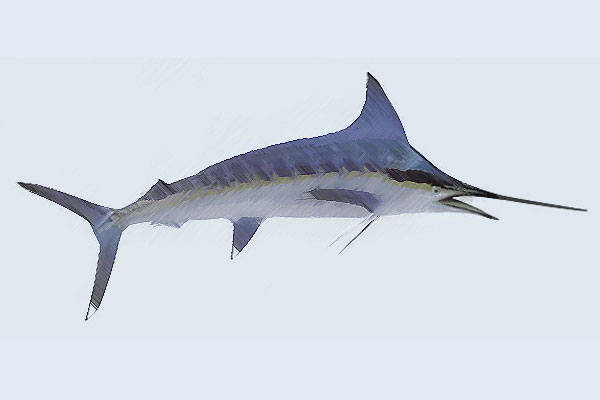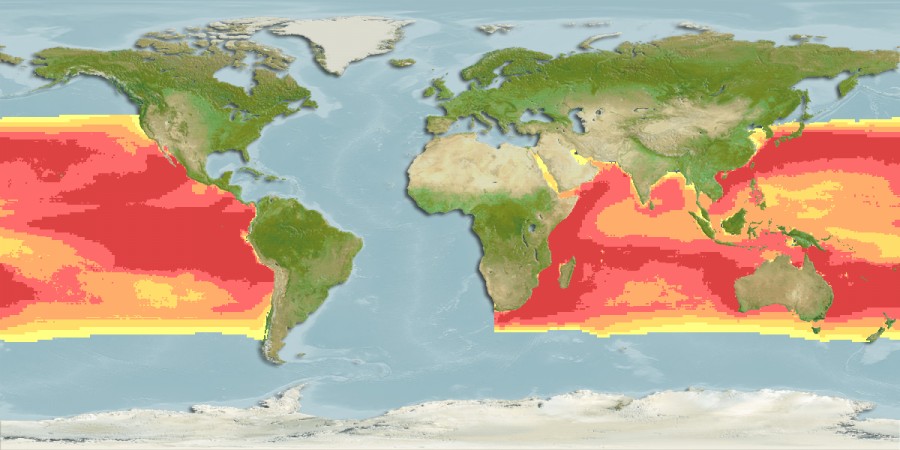Marlin
Classification / Names
Actinopterygii (Ray-finned fishes) > Perciformes (Perch-likes) > Istiophoridae (Billfishes)

Size / Weight / Age
Max length: 465 cm
Common length: 380 cm
Max published weight: 750.0 kg
Environment
Pelagic-oceanic; oceanodromous; marine; depth range 0 – 915 m, usually 0 – 200 m
Climate / Range
Subtropical; 15°C – 30°C (Ref. 43); 44°N – 47°S, 18°E – 69°W
Main Product Forms
Fresh: headed and gutted, loins; skin-off, skin-on. Marlin are highly migratory species found in tropical and temperate waters around the world. Although marlin concentrate in feeding areas, they are solitary swimmers frequently seen finning on the surface. Like other pelagics, marlin are opportunistic feeders, consuming large quantities of squid, small tunas and other billfish.
Blue Marlin
Makaira nigricans (Atlantic) and M. Mazara (Pacific) exceed weights of more than a ton, although the average size in the commercial catch is 80 to 300 pounds. The Blue Marlin can be distinguished from other marlins (with exception of the black marlin) by its considerably larger size. It can be distinguished from the striped marlin and white marlin by the absence of a distinct lateral line.
Striped Marlin
(Tetrapturus audax,Barred Marlin, A'u, Nairagi) is the preferred marlin of the Japanese, who savor it raw as sashimi. Because of its greater tenderness and higher oil content, it is also an excellent fish for grilling and baking. Striped marlin average from 40 to 150 pounds in the commercial catch. While it is the second most abundant marlin in the world catch (16,000 tons), it is a rarity in U.S. waters, with the exception of Hawaii, where it is fairly common. Along with the Blue Marlin, the Striped Marlin has distinct vertical stripes, which fade after the fish is out of the water. The flesh may have a slightly orange tinge.
Product Forms
Marlin are generally sold H & G or in loins. Imported loins are sold skin-on, but from Hawaii blue marlin loins are frequently sold skin-off (to keep the skin from cracking and deforming on the flesh); striped marlin loins, on the other hand, are usually sold skin-on because of the more tender flesh. Striped marlin tends to have an orange tinge to the flesh, while blue marlin is whiter—more the color of swordfish.
Distribution
Indo-Pacific: tropical and subtropical waters, occasionally entering temperate waters. Stray individuals migrate into the Atlantic Ocean by way of the Cape of Good Hope, but the existence of Atlantic breeding stocks is unlikely. Highly migratory species, Annex I of the 1982 Convention on the Law of the Sea (Ref. 26139).
